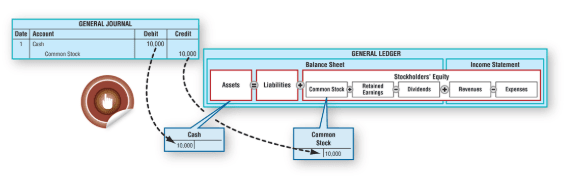
A company’s obligations to others include loans, accounts payable, and taxes. Assets are resources that a company owns or controls and are expected to provide future benefits. We calculate the expanded accounting equation using 2021 financial statements for this example.
Trial Balance in Accounting: Complete Overview

In this table, we will explore each element of the accounting equation and its relationship to the other two. Let us understand the accounting equation with the help of an example. In this case, there is no transaction that can make the equation not balanced.
Arrangement #2: Net Value = Assets – Liabilities
- Where, the P&L is like a collage of pictures taken in the whole year.
- This equation is always in balance because of the double-entry accounting method where every debit has a corresponding credit.
- In all financial statements, the balance sheet should always remain in balance.
- Each entry on the debit side must have a corresponding entry on the credit side (and vice versa), which ensures the accounting equation remains true.
- A credit in contrast refers to a decrease in an asset or an increase in a liability or shareholders’ equity.
- So this is anything that they own and we’re going to break these up into 2 categories.
This also prompts potential investors to find out whether the company has enough assets and liabilities fixed assets to perform well in the future or not. The accounting equation is so fundamental to accounting that it’s often the first concept taught in entry-level courses. It offers a quick, no-frills answer to keeping your assets versus liabilities in balance. If a company’s assets were hypothetically liquidated (i.e. the difference between assets and liabilities), the remaining value is the shareholders’ equity account. If we refer to any balance sheet, we can realize that the assets and liabilities and the shareholder’s equity are represented as of a particular date and time. Hence, as of January 15, only three accounts exist with a balance – Cash, Furniture A/C, and Service Revenue (the rest get net off during the period of the whole transaction by January 15).
- Long-term liabilities are obligations that are due in more than one year, such as long-term loans and bonds payable.
- Chartered accountant Michael Brown is the founder and CEO of Double Entry Bookkeeping.
- Even with the limitations, the accounting equation still turned out to be the best model introduced for accounting for businesses.
- Equity represents the portion of company assets that shareholders or partners own.
- These items provide a source of funding to run the operations of the business.
- This is important because it helps the owner to understand the financial position of their business and make informed decisions about its future.
Ready to Experience the Future of Finance?

No matter how complex a business becomes, this equation must always remain in balance. It’s essential for preparing balance sheets and financial reports, and helps to keep your books accurate. The accounting equation is based on the dual aspect concept of accounting principle that states every financial transaction has two equal and opposite effects on the company accounts. Another issue with the accounting equation is a lack of proper exposure to data that leads Cash Flow Management for Small Businesses to investors interpreting the company’s performance.
Total Liabilities = Total Capital Employed = Owned Capital + Loaned Capital
In all financial statements, the balance sheet should always remain in balance. A liability is considered current of they are payable within 12 months from the end of the accounting period, or within the company’s normal operating cycle if the cycle exceeds 12 months. The business has paid $250 cash (asset) to repay some of the loan (liability) resulting in both the cash and loan liability reducing by $250. $10,000 of cash (asset) will be received from the bank but the business must also record an equal amount representing the fact that the loan (liability) will eventually need to be repaid. We will now consider an example with various transactions within a business to see how each has a dual aspect and to demonstrate the cumulative effect on the accounting equation.

You’ll also see how both sides of the equation rise and fall simultaneously, always remaining equal. The faster an asset is fundamental accounting equation capable of being converted to cash, the more liquid it is. Entities which are capable of being liquidated/realised by forfeiting their possession are called assets. The working capital formula is Current Assets – Current Liabilities.

Single-entry vs. double-entry bookkeeping system
Therefore, deeply understanding the accounting equation is a must to find the perfect accounting services for your company, or it may lead to improper evaluation of a company’s financial health. On the other hand, double-entry accounting records transactions in a way that demonstrates how profitable a company is becoming. Investors are interested in a business’s cash flow compared to its liability, which reflects current debts and bills. Each entry on the debit side must have a corresponding entry on the credit side (and vice versa), which ensures the accounting equation remains true. The accounting equation is a core principle in the double-entry bookkeeping system, wherein each transaction must affect at a bare minimum two of the three accounts, i.e. a debit and credit entry. A double-entry bookkeeping system helps us understand the flow of any particular transaction from the source to the end.
The accounting equation is a model that states a company’s total assets are equal to the sum of total liability and shareholders’ equity. This equation helps companies evaluate their financial health, perform accurate bookkeeping, measure profitability, etc. It is sometimes called net assets, because it is equivalent to assets minus liabilities for a particular business.
